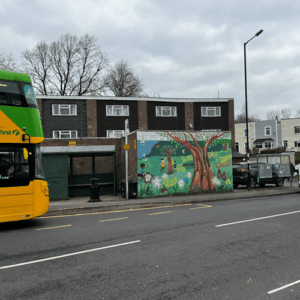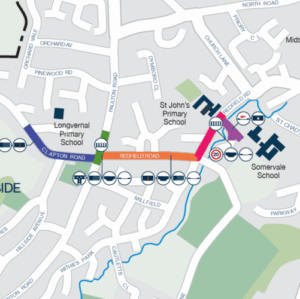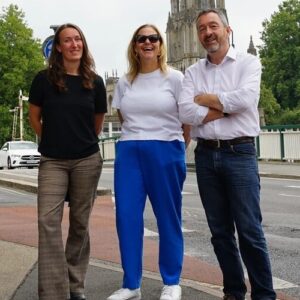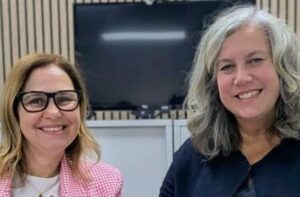
New transport hub planned for Pill
Plans for a new transport hub in Pill, North Somerset, are moving forward with works set to start early January...
Top line: a key issue in reducing health inequalities is a reduction of physical and social barriers to everyday opportunities for physical activities in people’s local environments.
The “inverse care law”—that is, those most in need of services are least well provided with them—is well known as it applies to health care.1 It is less often considered in relation to local provision for health promoting activities. Much health promotion advice focuses on individuals, and exhorts them to engage in better personal habits, or to encourage their children to do so. Such messages are differentially taken up by different social class groups; better off and better educated people are more likely to modify their diets, give up smoking, improve dental hygiene practices, and take up healthy physical activities than are poorer and less well educated people. It is often assumed that the barriers to the take up of health promotion messages lie in personal factors such as lack of motivation, fatalism or short termism, or lack of personal resources such as money, time, equipment, or knowledge. However, “the inverse care law” may apply to opportunities to take up health promoting messages as much is it does to the provision of health care.
Since 1987, the Medical Research Council (MRC) Unit in Glasgow has been studying socially contrasting localities in Glasgow City.2 As well as looking at residents in different age groups, MRC have been directly measuring socially structured features of the local social and physical environment that might enhance or inhibit people’s opportunities to be healthy or live healthy lives. MRC examined, among other things, primary care provision, social work provision, public transport, the price and availability of healthy foods, retail shopping services, crime rates, perceptions of “incivilities”, community groups, and facilities for physical recreation. In the case of all these features of the local environment, they have found “deprivation amplification”, that is, in places where people are poorer, iller, and have fewer personal resources such as money or private transport, local facilities that may enable people to lead healthy lives are also poorer.
Considering physical activity, in more socially deprived areas there were fewer formal resources for healthy physical recreation, eg bowling greens, tennis courts, sports centres; public transport was sparser and less frequent, and thus it was harder for people to travel elsewhere to use such facilities; there were fewer safe open green spaces where people could walk, jog, or take their children to play; children’s playgrounds were less attractive and safe; and there were more perceived threats in the immediate environment (eg, graffiti, litter, discarded injection equipment, risk of assaults and muggings, disturbances from youths) which were likely to deter people from walking or cycling around in the local area, or letting their children play outside. Perhaps not surprisingly, residents were less likely to engage in physical activity than were those in better provided for areas.
The author suggest that Governments could set targets for every community of a certain size to have access to certain basic provisions for physical activity, eg safe play areas for children, green open spaces, and safe well lit streets and pavements.
1 See Essential Evidence No 22
2 Macintyre, S. 2000 The social patterning of exercise behaviours: the role of personal and local resources, British Journal of Sports Medicine, 34: 5.
39: The social patterning of exercise behaviours and deprivation amplification Download pdf PDF approximately 9.8 K
Plans for a new transport hub in Pill, North Somerset, are moving forward with works set to start early January...

New funding will improve walking routes in Midsomer Norton, helping children travel to school more safely.

Works to extend the popular m1 metrobus route and improve walking, wheeling and cycling infrastructure in the area are set...

The West of England Mayoral Combined Authority will receive more than £11.7 million in government funding to help them deliver...

Millions of passengers in the region are set to benefit from faster, cheaper and more reliable buses after the Government...